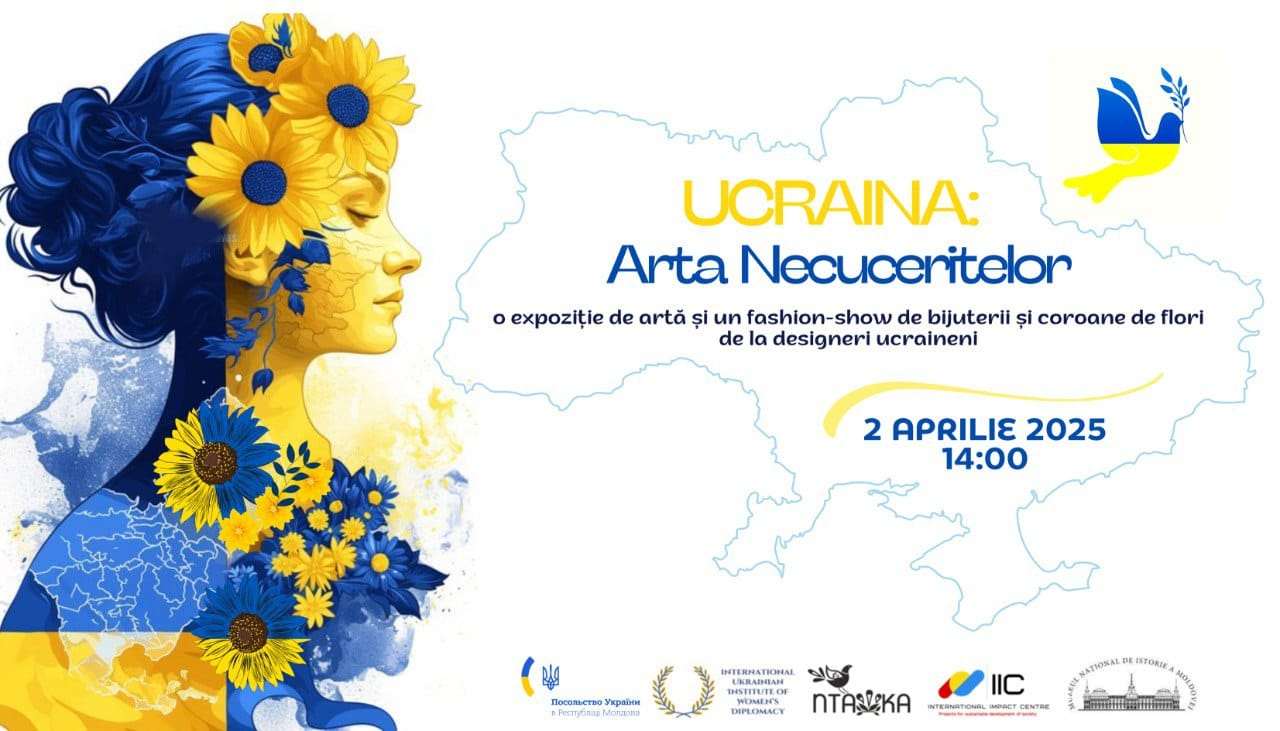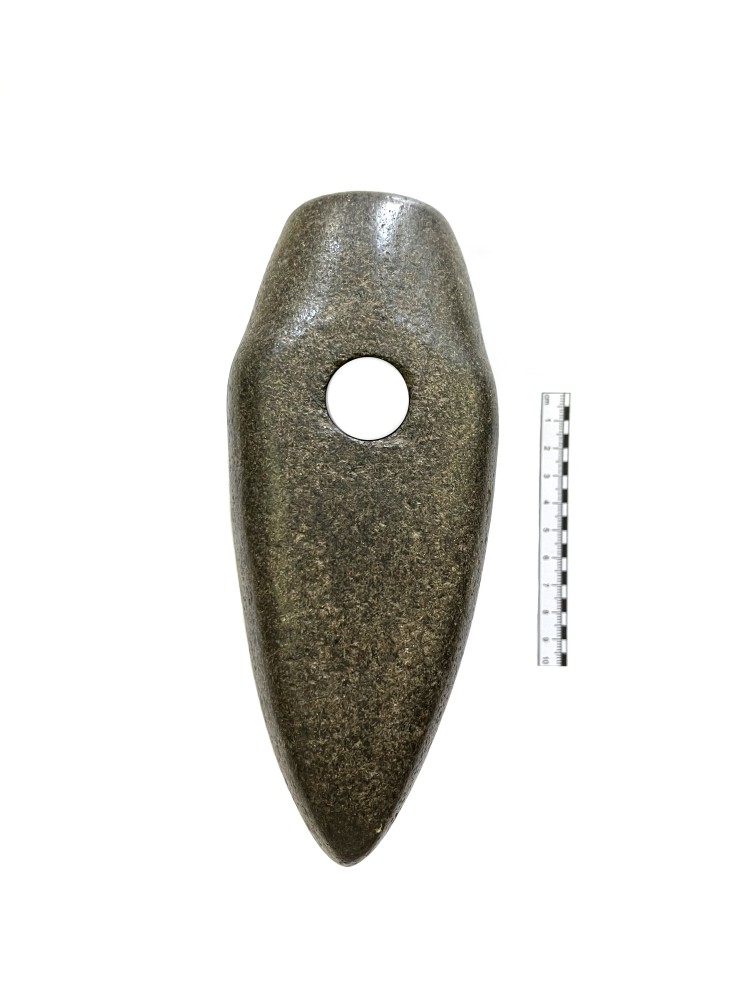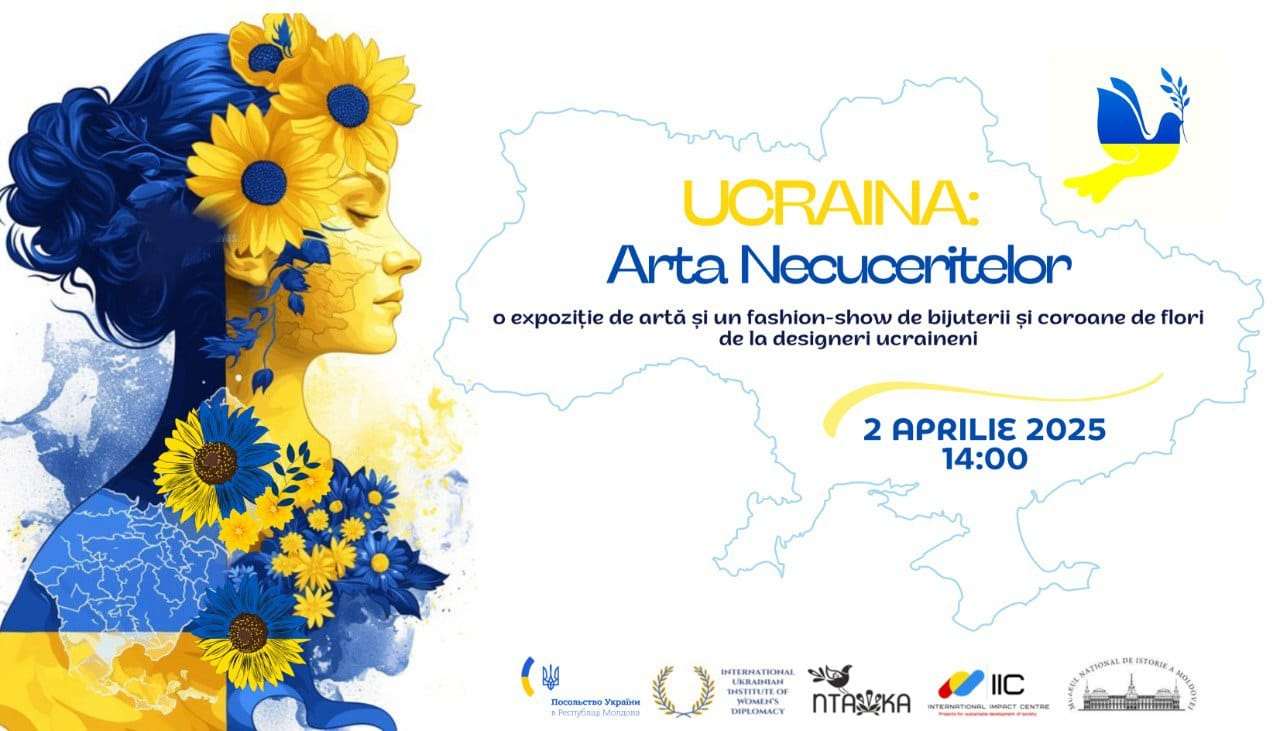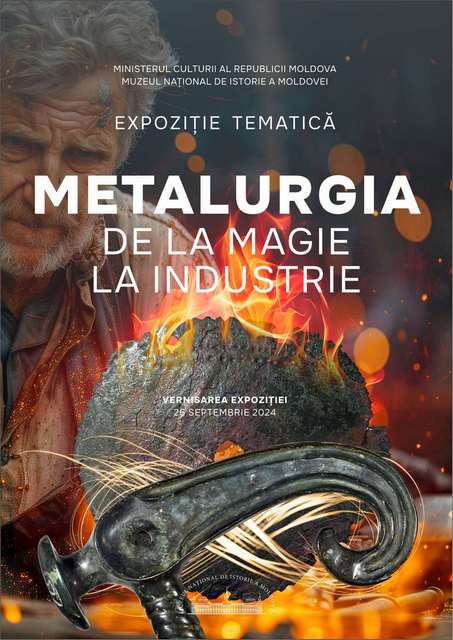
The National Museum of History of Moldova, in partnership with the Embassy of Ukraine in the Republic of Moldova, is organizing the exhibition "Ukraine: The Art of the Unyielding" / „Україна: Мистецтво Нескорених." This exhibition features a diverse range of decorative art, including handcrafted jewelry made of natural stone, symbolic traditional crowns, and ethnic accessories that highlight Ukrainian identity.
The exhibition showcases three distinctive collections. The first, "The Legacy of Generations. Revival" / „Спадок поколінь. Відродження", includes 20 necklaces made from natural stone and adorned with hand-cast beads of brass, bronze, and copper. The designer, Svitlana Golovchuk, hails from the Carpathian Mountains. Her creations are inspired by the culture and history of her family, reflecting patriotism and traditions passed down through generations.
The second collection, "I Will Weave a Crown, I Will Weave a Silk Crown" / „Заплету віночок, заплету шовковий", features crowns made of dried flowers, with each flower carrying a symbolic meaning. The author, Mîhailova Vilena, is a fashion designer and founder of several creative organizations. These crowns are a modern reinterpretation of a traditional Ukrainian element.
The third collection, "Symbol of Ukraine" / „Символ України", showcases crowns made of satin ribbons, created by Larisa Davîdenko, a designer and educator. Her pieces blend traditional craftsmanship with contemporary design.
The exhibition is organized by the Embassy of Ukraine in the Republic of Moldova along with partners: the Association of Ukrainian Culture and Art in Moldova "Ptashka," the NGO "International Impact Center," and the NGO "International Institute of Women's Popular Diplomacy of Ukraine."
This exhibition is not only an opportunity to admire the beauty of artistic creations but also to support Ukrainian art.
"Ukraine: The Art of the Unyielding" / „Україна: Мистецтво Нескорених" can be visited between April 2-18, 2025, with the opening ceremony taking place on April 2, 2025, at 2:00 PM in the ground floor lobby of the National Museum of History of Moldova, Chișinău, 31 August 1989 Street, 121A.
 31 August 1989 St., 121 A, MD 2012, Chisinau, Republic of Moldova
31 August 1989 St., 121 A, MD 2012, Chisinau, Republic of Moldova
















































